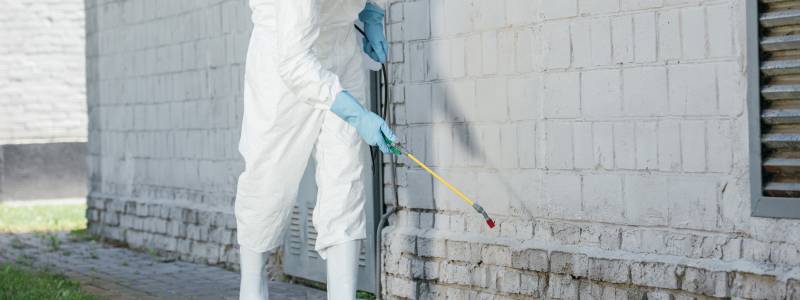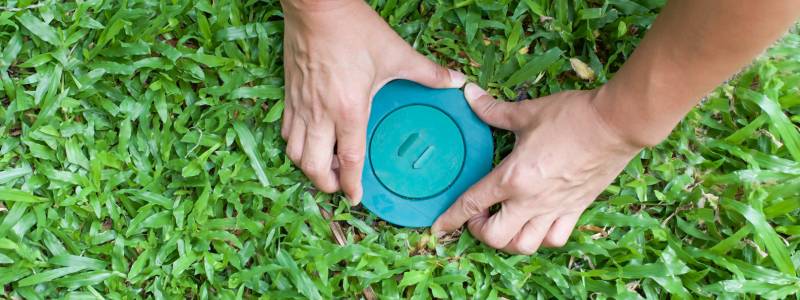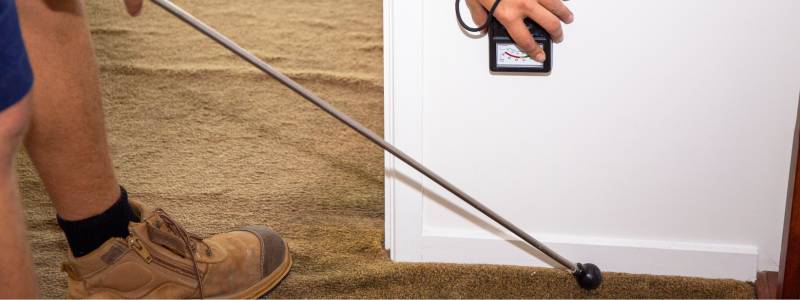How Much Does Termite Treatment Cost in Australia?
Termite Treatments Pricing Guide
The cost of termite control from Green Pest Control can range quite a bit based on several factors. But generally, you can expect to pay anywhere from $500 – $1500 for most residential homes that require treatment.
Termites, the silent destroyers, can wreak havoc on your home. You may see tunnels in your walls or hollowed framing. Or, you may even catch the types of termite in action swarming around your home. Once those fears become reality, panic sets in. After the initial shock wears off, practical questions follow.
How bad is it? Do I need to tent the house? And the big one…how much is this going to cost me?
Average Cost of Termite Treatments
On average, expect to invest anywhere from $500 to $3000 to fully eliminate and prevent.
Here’s a quick rundown of the cost typically paid for common termite treatment methods:
- Localized spray treatment: $500 – $1000
- Chemical soil treatment: $1000 – $2500
- Termite bait system: $800 – $1500
- Tenting & fumigation: $3000+ (mostly commercial)
- Reticulation system: starting at $1000 per installation
- Termite Shields: $100 per linear meter
Most single-family homes can be treated for $1000 – $1500 using a liquid soil application or termite bait stations. But prices can be higher if a combination of methods are used.
Let’s take a closer look at each method and what’s included…
Chemical Soil Treatments
This is the most common treatment used by professional pest control companies. The prices average from $1,300 to $2,500 per property. It involves spraying termiticide liquids around the interior and exterior foundation. This creates a protective chemical barrier. Costs vary based on the interior and exterior areas, but generally include:
- Initial inspection & site measurements
- Drilling small holes around concrete slabs, foundations, piers etc.
- Application of EPA-registered termiticide liquid in trenches, holes, and sprayed over sections of soil
- Minimum 3-year warranty against new termite damage
- Follow up inspections
- Additional treatments if there are still active termites
This method provides a comprehensive pre-construction termite solutions for new homes too. Builders will have pest control perform soil treatments before the slab foundation is poured. Doing so, prevents future infestations.
Termite Bait Systems
Termite Interception & Baiting System is a two step process focused on using the critters themselves to destroy their nests or an entire colony. This can cost $900 – $1,500 per average-sized home. It involves:
- Initial inspection of activity areas
- Installation of termite baiting
- Regular inspections & monitoring every 1-3 months
- Eliminating colonies using baits & insect growth regulators
- 5 year warranty against structural damage
Baits also provide long term prevention by impacting the overall termite population around your home over time. This method is best for early stage activity and smaller insect populations.
Fumigation Tenting
Fumigation is rarely needed for single family houses, but sometimes required for severe drywood termite infestations. This intensive process involves tenting the entire structure and pumping in lethal Vikane gas to penetrate walls and framing.
Due to the prep work, materials, labor, and permitting fees, fumigation ranges from $3,000 to $5,000+. The high costs limit this to wood-destroying pests that cannot be controlled using conventional treatments. It is primarily used on commercial properties which require full site evacuation during the process.
Reticulation Systems
A reticulation system is a network of underground piping and trenching. It serves as a barrier against subterranean termites. The pipes are installed around the perimeter and emit a non-repellent termiticide into the soil. This happens anytime activity is detected. This creates an invisible protective barrier for the foundation. Installation starts at $1000 per installation and then go up from there.
The initial investment is higher than conventional treatments. But it provides semi-permanent protection for over 30+ years. Annual termite inspections, maintenance, and termiticide refills cost approximately $200 per year. Consider this option if you plan on staying long term.
Termite Shields
Termite barrier treatments provide a physical and visual barrier between the foundation and soil. These mesh shields are embedded into exterior walls during construction. But existing homes can have stainless steel shields retrofitted for around $100 per linear meter installed.
Shields prevent these critters from building a termite colony and tunneling upwards into walls from the ground. Used in conjunction with chemicals or baits, this adds another layer of protection.
What Affects the Price of Termite Treatments
- House Size – The biggest factor is total area. More chemicals are needed per meter to treat soil around larger homes. This requires more time and work.
- Level of Infestation – Medium to heavy infestations usually need a mix of soil treatment, repairs, and bait stations. Worse cases make the price go up.
- Foundation Type – Homes on concrete slabs are easiest to treat by applying chemicals to the soil. Crawl spaces and basements need extra work to get full coverage.
- Yard Area – Chemicals go around the entire outside foundation and nearby areas. Bigger yards with more landscaping, gates, and tile can make it harder and use more chemicals.
- Location – Remote resorts and businesses often pay more because of travel time required to bring equipment and chemicals.
What to Expect in a Treatment Plan
The first step is getting your home inspected for termites by a professional. They will check wood structures, under floors, and around the outside for any signs of termites. If termites are found, they will recommend treatment options and pricing.
- Exterminators should give you a written proposal to review. It lists what will be done, methods used, warranty periods, guarantees, and payment schedule.
- For liquid soil treatments, expect 1-2 days of work. Holes are drilled, chemicals applied, and signs placed outside saying when it’s safe to re-enter the area.
- Baits get set up around the inside and outside of the foundation. Inspectors will schedule follow-ups to check and service the units. This can happen every 1-3 months for at least 1-2 years.
- Follow up treatments may be needed if more termites are spotted. Annual inspections are recommended after the initial work is done.
Tips for Saving Money
- Prevent problems before they start – When building a new home, have the soil treated for termites. This can cost $500 – $750 but prevents big problems later.
- Do your own inspection – Check your home yourself every year for the first signs of termites like mud tunnels or swarms. Fixing issues early keeps them from spreading. This also lowers the need for more treatment.
- Get several price estimates – Prices between companies can be very different. Get 3-4 quotes for your specific problem to find the best deal.
- Ask for a lower price – Especially for big jobs, ask for 10-15% off the first estimate. Offer to pay cash to potentially save more.
- Split up the work – Get wood repairs done separate from the termite treatment. Many handymen can patch damaged wood cheaper than big companies.
- Ask about payment plans – Some exterminators let you spread payments over 6-12 months with no extra fees. This makes it more affordable.
- Use baits – Baits are less disruptive and cheaper than fumigating the whole home. They’re great for catching issues before major damage.
- DIY options – Home stores sell professional-grade chemicals if you want to try treating termites yourself. But results vary a lot and DIY pest control has risks.
Stay diligent in keeping costs reasonable while still getting quality treatment. Protecting your home is vital, but no need to overpay in the process.
FAQs
Does home insurance cover termite control?
Unfortunately, most insurance providers don’t cover termite-related damage. Some insurers may cover fungus/mould damage resulting from termites. Check your policy specifics to be sure.
Are termite treatments tax deductible?
In most cases, termite control costs are deductible as home maintenance or repairs. Consult your tax professional to confirm details based on your personal situation.
When is the best time to treat for termites?
Spring to early summer is best as soil remains moist, temperatures rise, and termite activity increases. However, infestations can be treated year round.
How long does it take for treatments to work?
Liquid soil treatments provide instant residual protection. Baits work over 1-2 years to eliminate colonies. Full control is usually achieved in less than 60 days.



